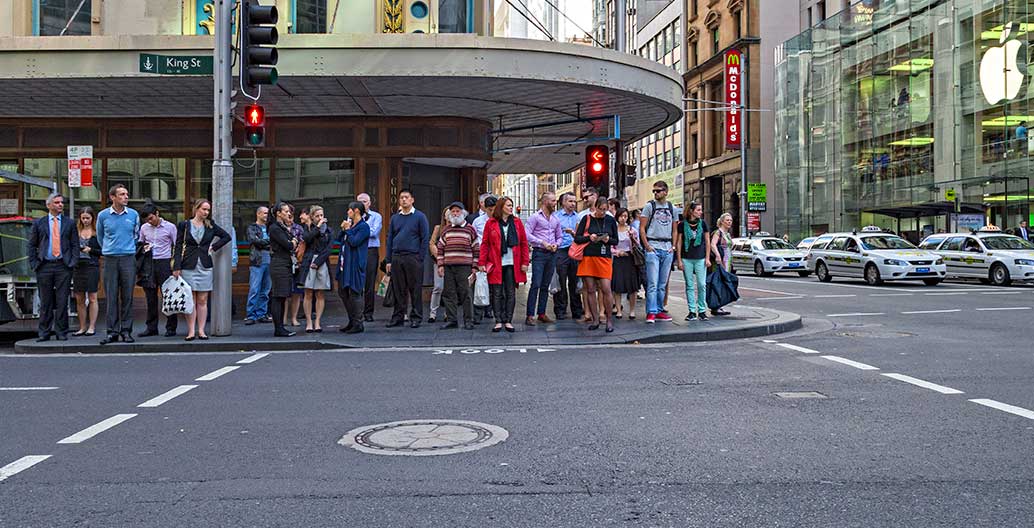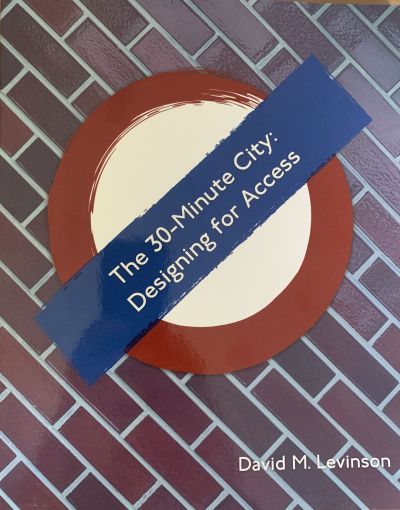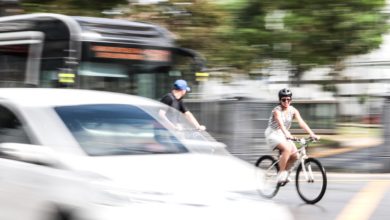
To get our cities moving again, we need a new kind of urban professional
In this extract from his new book The 30-Minute City, David Levinson argues that in designing our cites, we need ‘Urban Operations’ experts who can straddle the realms of both strategy and tactics.
Access is the driving force behind how cities were built – which is to say, cities developed with the goal of making it as easy as possible for people to reach the opportunities and activities contained within them. In the contemporary city, though, the professionals tasked with designing and developing our cities for access can often seem to be working at cross-purposes.
Our engineers are trained in engineering school to ‘do it right.’ They are trained intensively in calculations to make sure the math works out. This is very important: structural engineers do not want to misplace a negative sign or they would build the bridge upside down. In contrast, our planners retort to the engineers ‘do the right thing.’ What are the right values? And that’s really important, too. Meanwhile, our public citizens say: ‘do the right thing right’, synthesising this apparent conflict.

In designing and managing our cities for access, we need to think about both strategy and tactics. We need to think about ideas and implementation. For instance, at train stations with entrances on only one end of the platform, the objective of enabling people to leave the station is supported, but not the broader objective of enabling them to reach their destinations in the least amount of time. Traffic signals presently are timed to minimise delay for vehicles, but not for people, and fail to count vehicle occupancy (buses wait in the same traffic as cars) or pedestrians.
A Nihilistic Theory
I’m going to introduce a ‘nihilistic’ theory of transport and land use: everything is ‘pointless.’
Transit facilities are pointless. A station is not a point, it is a place.
Junctions are pointless. A junction, or intersection, is not a point, it’s a space. It has conflict points, which are also spaces, but it takes time to traverse, and those traversing it take up space.
Cities, too, are pointless, and yet planners often abstract away important details – as in the Greater Sydney Commission’s Metropolis of Three Cities plan, which, like so many regional plans, has dots on maps to represent whole communities.
Everyone working in the urban sphere should recognise this ‘pointlessness.’
Just as small spatial relations matters, so too does time. Do small amounts of time savings matter? Yes! Absolutely!
A traffic engineer proposes a change that will save somebody five seconds, and someone inevitably retorts that nobody cares about five seconds. But we can never get to larger time savings (or accessibility gains) when we’re always talking about how unimportant the small changes are. There is no way to save 15 seconds if you don’t save five seconds. There is no way to save 30 seconds unless you save 15, or one minute unless you save 30 seconds, or five minutes unless you save one minute.
Trips comprise many time elements, and use many bits of the transport network, and we are not going to save time all at the same place or with the same project or process. So the better practice is to take the gains that are possible, as they will accumulate over time. Saving time, or increasing speed, increases the area that can be covered in the same amount of time, and since accessible area increases with the square of the radius, time savings have disproportional effects on accessibility.
This argument applies to all modes. The traffic signal engineers use it to justify their signal timings for automobiles. The potential flaw here is not in saving time, but in doing so at the expense of pedestrians and the neighbourhood at large.
There is the argument that time, unlike money, cannot be ‘saved’, as there is no way to store it. And of course there is an element of truth there. But I would argue that time can be used for things that are valued more highly than standing at an intersection waiting to cross – which is to say, anything else. The time not spent waiting at the intersection might be spent in a more pleasant environment, or walking or riding farther to a slightly better or higher paying job, or a shop with somewhat better goods, or from a slightly better or less expensive home. These are the trade-offs people make all the time, and by increasing the area that can be traversed in a given amount of time, we increase opportunity and choice.
A profession that is interdisciplinary in real time – or, doing the right thing right
To do the right thing right, we want to forge a new profession that is interdisciplinary in real time. Planners create long-term plans covering large areas – they, at least in theory, aim to optimise for all of society. Analysts develop policies over large areas, which have a shorter-term time horizon, and also should at least consider all of society. But the local-looking professions – engineers, architects, urban designers, and technicians of various kinds – whether they are involved in building for the long-term or managing and operating the system in the short-term, by definition optimise locally, for the site, rather than the city. How the site interacts with the city is neglected.
We need a profession not of more urban planners, nor of more transport engineers, but urban operators – people engaged in today’s city, not tomorrow’s, but who can optimise for the system as a whole (that is, by thinking about accessibility) and not just their small piece of it.
The world is changing ever-faster. Yet strangely, today’s professionals undertake and celebrate very long-term plans where they acknowledge the existence of a problem (i.e. congestion), and technology (i.e. autonomous vehicles), but don’t acknowledge that anything changes.
Instead, we should forge new urban operators as a strong alloy of planning, engineering, economics, and design. Urban operators take ideas in real time and solve today’s problems with resources on-hand, rather than solving imagined problems that bring distant dangers near. We have enough problems today. We also have solutions available to us today, and we don’t implement them. And yet people are employed to work on 40-year plans.
Today’s disciplines are excellent for admiring and nurturing today’s problems, but not nearly so adept at solving them. Engineers and planners are so focused on the long term, their jobs effectively require them to build it and then abandon it. Operating and maintaining the system is someone else’s responsibility. Once they have made their design they hand it over to a contractor for construction, who then hands it over to the client.
And then we have people who are making microscopic decisions without thinking about the big picture. Where do you put the bus stop relative to the train station? This affects accessibility, but the decision is made based on what is convenient for the bus operator rather than passengers, or worse, to minimise delay for cars.
As Bill Garrison argued, we want people who can bridge the hard and the soft – the hardware engineering of infrastructure and vehicles and the software of management, control, and financial systems.
Bridging or merging the soft and the hard would vastly improve policy and policy-making processes. We should be able to simultaneously think of engineering and policy, not be restricted to engineering or policy. Those of us in the transport field should identify as transportists – not transport engineers or transport planners or transport economists. The problem must come before the mechanism of solution.
We want people who can bridge the site and the city. People who think about the position of a train platform in the greater context of the metropolitan area, so that people living on the south side of the platform can easily reach it, rather than semi-circumnavigating the train station to its only entrance on the north.
We want a fusion of planners and engineers who would focus on the ends not on the means, who can think in multiple scales and multiple time horizons.
The goal of the 30-minute city aligns with travel time budgets and human behaviour. We know that, historically, land developers and the railway builders were keen on the idea of a feasible commute, and they were keen on this idea when they deployed tram and train networks and concomitantly subdivided large tracts into lots and built homes that were within a 30-minute commute of the central city.
Lower case ‘d’ design
Architects are famous for BIG design ideas. But cities are not amenable to big designs any more. They grow (and should grow) incrementally, not comprehensively. So instead let’s talk about what I will call “lower case ‘d’ design,” the humble design decisions about where to put bus stops relative to station entrances, and how to time traffic signals. These are small urban design decisions that don’t get sufficient attention.
There are many things that we can do that involve rethinking the details – like adding train station gates to both ends of platforms to expand catchment areas, and thus patronage. Details like stop spacing and location, practices like all-door boarding, payment before boarding, optimising timetables and frequency, may just squeeze a few seconds per stop or minutes per route out of the existing configuration, but collectively they greatly expand people’s accessibility.
More strategically, this requires thinking about transport and land use balance. Offsetting today’s imbalance can give us growth without additional travel or commuting-related congestion. To achieve a 30-minute city, cities need to put new jobs in housing-rich areas and new housing in job-rich areas systematically as a way of growing. This contrasts with local government’s desire to focus employment in the central city, and developers who will tend to put more housing in the outer suburbs where there are many fewer jobs.
And we need to design for the cities we want, not ‘predict and provide’ for the city we forecast. Our future cities cannot be delivered by the same disciplinary thinking that created the cities we have.
–
This is an abridged extract taken from David Levinson’s book The 30-Minute City: Designing for Access, available here in PDF format and here in print.
Levinson joined the School of Civil Engineering at the University of Sydney in 2017 as Foundation Professor in Transport Engineering. He conducts research on accessibility, transport economics, transport network evolution, and transport and land use interaction.


